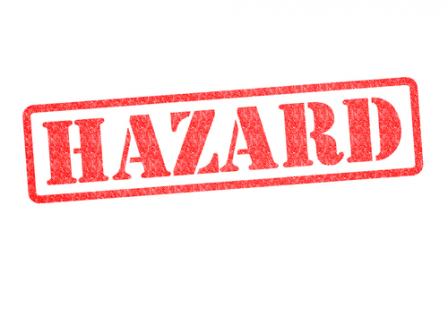What’s the Difference Between Hazard and Risk?
When you know the difference between a hazard and a risk, you can live a more relaxed life.
Monica Reinagel, MS, LD/N, CNS
Listen
What’s the Difference Between Hazard and Risk?
Anxiety about food runs high these days, fueled by a constant stream of headlines on the dangers—both real and imagined—of various dietary choices. From scary-sounding chemicals in processed foods to bacterial contamination of fresh vegetables, no food group is immune.
There are a lot of ways that careless reporting contributes to the general hysteria. Headline writers regularly confuse correlation with causation. Reporters fail to distinguish between relative and absolute risk. They misconstrue the meaning of the word significant, as it’s used in statistics, as having the same meaning that we give it in the real world. These are all things that I’ve talked about before. But there’s another important distinction I haven’t written about: the difference between a hazard and a risk.
How Does Red Meat Affect Your Cancer Risk?
Last week, for example, the World Health Organization’s Cancer Research Group (IARC) declared red meat to be a probable carcinogen. Virtually all of the reporting I saw talked about red meat increasing your risk of cancer or causing cancer. Yet this classification of red meat as a probable carcinogen had nothing to do with risk assessment. It was a hazard assessment.
See also: Eating Red Meat Causes Cancer? Not Exactly
According to IARC’s websiteopens PDF file , “the distinction between hazard and risk is important. An agent is considered a cancer hazard if it is capable of causing cancer under some circumstances. Risk measures the probability that cancer will occur … The monographs may identify cancer hazards even when risks are very low with known patterns of use or exposure.”
And, in fact, the WHO’s designation offers no information on your actual risk of cancer related to red meat, or factors that would raise or lower that risk.
Understanding Hazards Versus Risks
A sharp knife is a hazard; it can cut you. It’s a hazard regardless of whether it is sheathed in a drawer, submerged in a sink full of soapy water, or flying through the air in your direction. The hazard is the same whether it’s being wielded by your toddler, your tipsy Uncle Gerry, or a chef at a Japanese steakhouse.
The risk of someone getting cut by that knife, on the other hand, varies dramatically depending on the circumstances. The risk of someone being cut by a knife that’s in a knife block is very low. The risk of someone being cut by a knife balanced on the edge of a counter with turkey grease on the handle is quite a bit higher. Your risk of being cut by a knife while showering at the Bates Motel? Very high indeed.
There’s virtually no risk of being cut with a spoon, on the other hand, because spoons do not pose a cutting hazard. And yet most of us still choose to cut our food with a knife. Not because we’re unaware of the hazard posed by a sharp knife, but because we feel comfortable in our ability to manage the risk by handling knives carefully and using common sense.
By the same token, you shouldn’t poke a metal skewer into a toaster while it’s on. You should definitely avoid dropping it into a bathtub full of water—especially if it’s plugged in and someone is in the bathtub! Yet despite the potentially lethal hazard of electrocution, most of us feel comfortable making toast. An electric toaster is a hazard; we take care to manage our risks. In fact, I think your risk of injury is probably far greater trying to toast a piece of bread over the gas flame on your stovetop.
For that matter, falling in love poses a hazard of having your heart broken. Your actual risk of heartbreak, on the other hand, depends a lot on who you fall in love with.
Identify Hazards and Manage Risks
I’m sure you get the point. Hazards are everywhere. And it is important to identify hazards so that we can manage our risks. But it’s also important (to our sanity, if nothing else) to remember that something can be a hazard without posing a substantial risk. And that a lot of the risk associated with various hazards is within our control.
See also: You Don’t Have to Give Up Red Meat to Be Healthy
If you have questions about hazards and risks of various foods, send them my way. I’m happy to help sort out what we really do need to worry about, and the most effective ways of reducing our risk without reducing our existence (or our menu) to one of fear and paranoia.
Image courtesy of Shutterstock.

